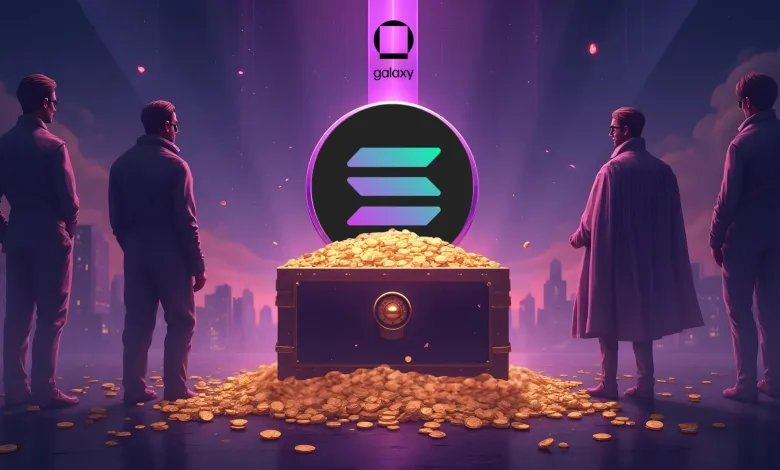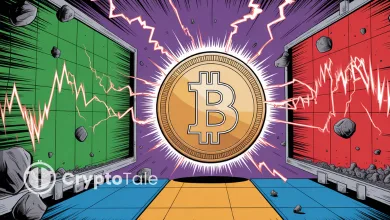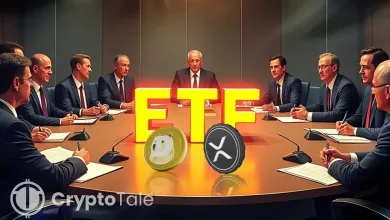Galaxy, Jump & Multicoin Target $1B Solana Treasury Fund

- Galaxy, Jump, and Multicoin plan a $1B Solana treasury backed by Cantor Fitzgerald.
- The Solana fund aims to accelerate developer activity and attract institutional capital.
- A $1B SOL reserve would surpass Upexi and Bit Mining’s current Solana holdings.
The race to build single-asset corporate treasuries is moving beyond Bitcoin. Solana has now become the new institutional target. Galaxy Digital, Jump Crypto, and Multicoin Capital are preparing a bold plan. Together, they aim to raise $1 billion for a dedicated Solana reserve.
According to a Bloomberg report, the plan involves acquiring a public company. That entity will then transform into a Solana-focused digital asset treasury. Cantor Fitzgerald has reportedly been tapped as the lead banker. The Solana Foundation has also endorsed the move, indicating a wide ecosystem backing. This attempt would become the largest Solana treasury ever formed.
A Treasury Strategy Beyond Bitcoin
Corporate treasuries have often favored Bitcoin as their primary digital asset. Now, attention is shifting toward Solana. The network’s speed, staking yields, and developer growth are attracting large-scale interest.
If successful, the proposed $1 billion stash would surpass all existing Solana treasuries combined. Today, Upexi holds the largest Solana reserve at over 2 million SOL. At current market prices, that holding is worth about $400 million. Upexi announced earlier this month that its Solana treasury generates additional value through staking yields and discounted locked tokens.
Another major holder, DeFi Development Corporation, has accumulated 1.29 million SOL. At current prices, that reserve is worth around $240 million. Meanwhile, Bitcoin miner Bit Mining recently pivoted to Solana. The firm plans to raise between $200 million and $300 million to build its own SOL reserve.
If Galaxy Digital, Jump Crypto, and Multicoin Capital plan moves forward, their treasury would dwarf these efforts. The Solana Foundation’s endorsement highlights the importance of this initiative. Industry reports suggest the deal could close by early September 2025, although none of the parties have confirmed the timeline publicly.
Institutional Confidence in Solana
The planned $1 billion fund represents more than accumulation. It signals institutional confidence in the long-term viability of Solana. The network recovered strongly after the collapse of FTX, which had deep ties to Solana.
Since then, Solana has regained investor interest. Its token, SOL, ranks as the sixth-largest cryptocurrency by market capitalization. At press time, SOL trades near $200, with a 6.6% gain over the past month. Large-scale treasury accumulation could increase liquidity and support higher valuations. It may also stimulate broader adoption within decentralized finance and application development.
Related: Solana’s 107K TPS Benchmark Raises Doubts on Network Capacity
The deal, if closed, would also give Solana a unique position. It would be one of the few networks with a billion-dollar institutional reserve backing its ecosystem. That visibility could attract additional developers and enterprises. The strategy mirrors a growing shift in corporate finance. For Solana, the backing of Galaxy Digital, Jump Crypto, and Multicoin Capital marks a milestone.
The move also complements broader U.S. policy trends. In March, President Donald Trump signed an executive order establishing a federal crypto stockpile, with reports suggesting Solana could be included. This convergence of corporate and government attention highlights Solana’s growing role.
The treasury plan stands as the strongest signal yet that institutions are ready to expand beyond Bitcoin and Ethereum. By building a massive Solana reserve, Galaxy Digital, Jump Crypto, and Multicoin Capital are rewriting the rules of corporate digital asset strategy.





